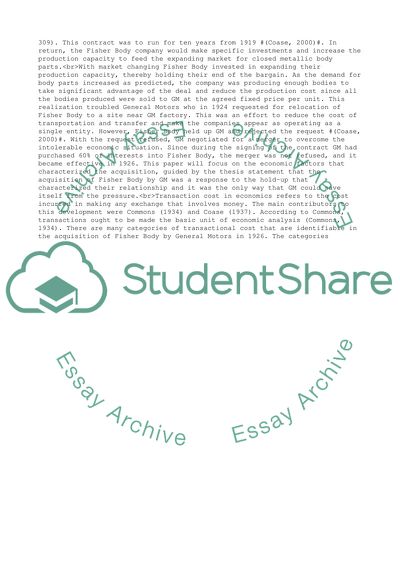Cite this document
(Outline and critically evaluate explanations for the 1926 acquisition Essay, n.d.)
Outline and critically evaluate explanations for the 1926 acquisition Essay. https://studentshare.org/business/1842905-outline-and-critically-evaluate-explanations-for-the-1926-acquisition-of-fisher-body-by-general-motors-that-draw-on-the-categories-of-transaction-cost-economics
Outline and critically evaluate explanations for the 1926 acquisition Essay. https://studentshare.org/business/1842905-outline-and-critically-evaluate-explanations-for-the-1926-acquisition-of-fisher-body-by-general-motors-that-draw-on-the-categories-of-transaction-cost-economics
(Outline and Critically Evaluate Explanations for the 1926 Acquisition Essay)
Outline and Critically Evaluate Explanations for the 1926 Acquisition Essay. https://studentshare.org/business/1842905-outline-and-critically-evaluate-explanations-for-the-1926-acquisition-of-fisher-body-by-general-motors-that-draw-on-the-categories-of-transaction-cost-economics.
Outline and Critically Evaluate Explanations for the 1926 Acquisition Essay. https://studentshare.org/business/1842905-outline-and-critically-evaluate-explanations-for-the-1926-acquisition-of-fisher-body-by-general-motors-that-draw-on-the-categories-of-transaction-cost-economics.
“Outline and Critically Evaluate Explanations for the 1926 Acquisition Essay”. https://studentshare.org/business/1842905-outline-and-critically-evaluate-explanations-for-the-1926-acquisition-of-fisher-body-by-general-motors-that-draw-on-the-categories-of-transaction-cost-economics.


